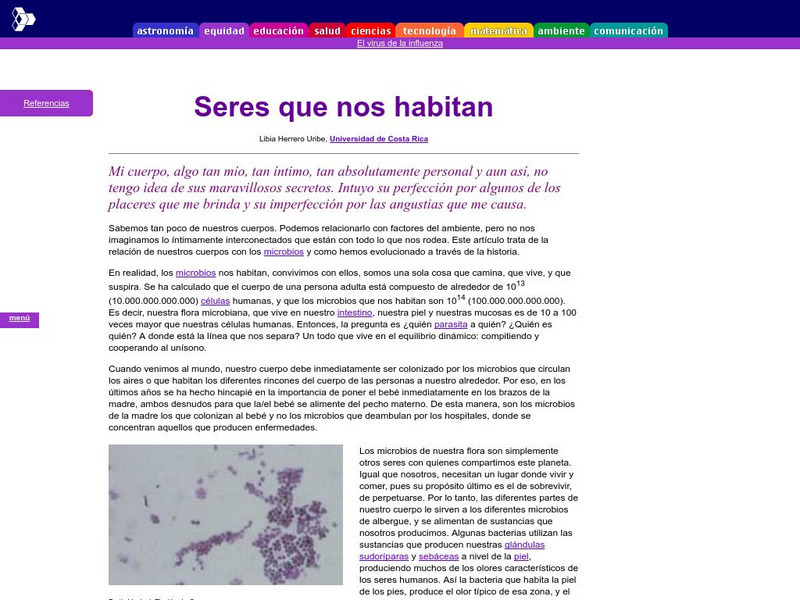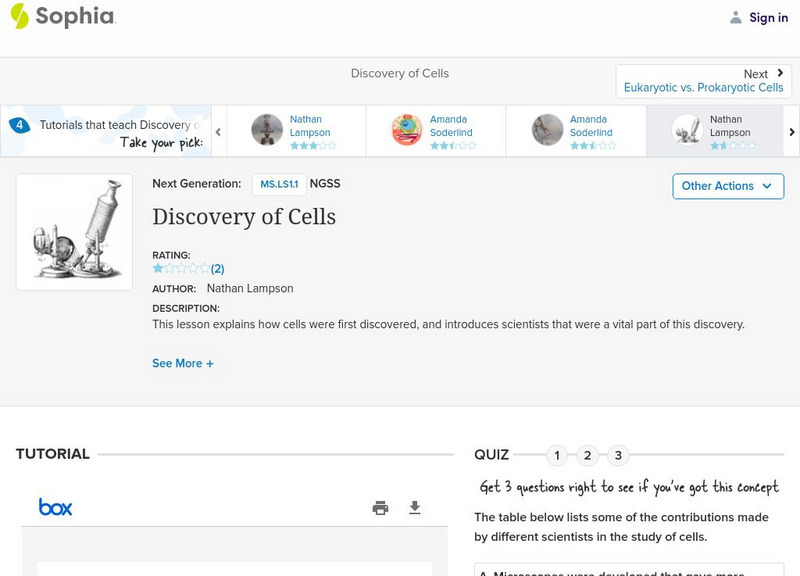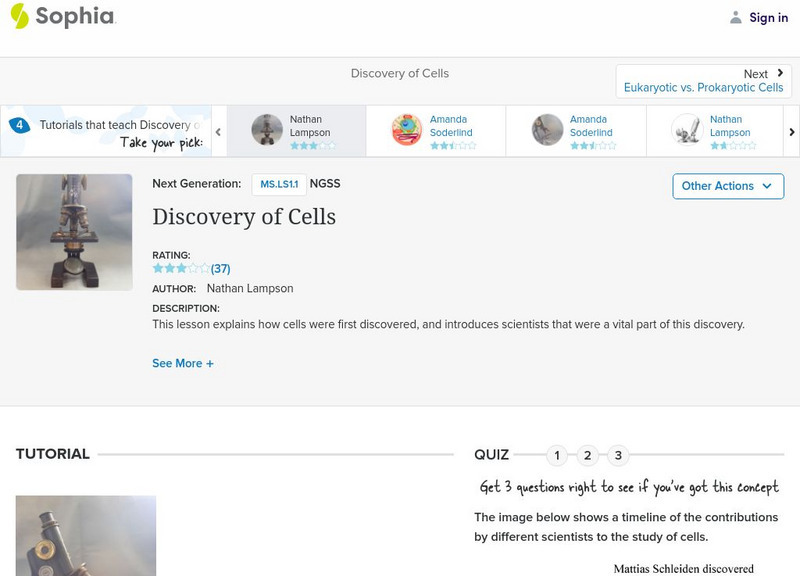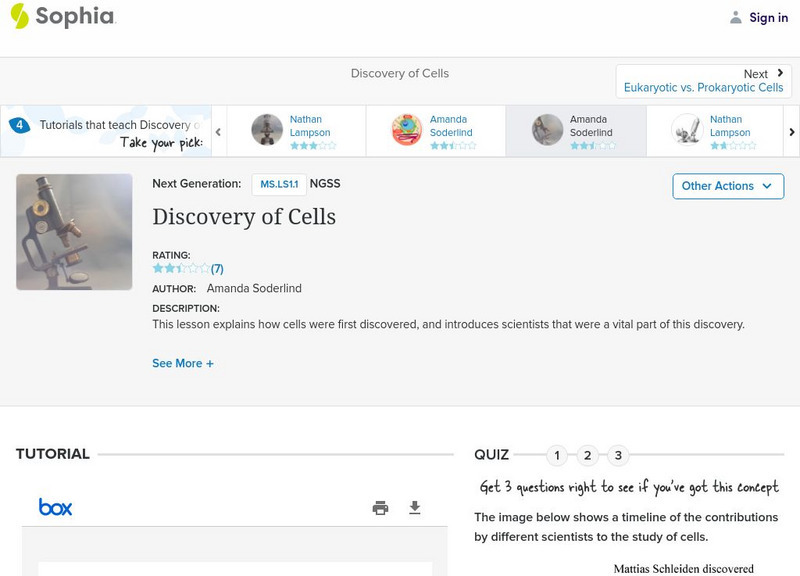McGraw Hill
Mc Graw Hill:cellular Mechanisms of Development
Find out what you know about cellular mechanisms of development by taking this post test.
McGraw Hill
Mc Graw Hill: Cellular Mechanisms of Development
Find out what you know about cellular mechanisms of development.
University of Arizona
University of Arizona Biology Project: Cell Biology
In-depth information on all stages of cell biology as well as lesson ideas, tutorial diagrams, and online labs.
Exploratorium
Exploratorium: Microscope Imaging Station: Cell Motility
This interesting site explains how cells move and provides videos depicting the movement of various human and animal cells.
Other
Principia Cybernetica Web: Multicellular Organisms
Learn about the transition from unicellular to multicellular organisms. Includes related sources.
Other
Leeuwenhoek's World of Microbes
This site has some history of van Leeuwenhoek (1632-1723 CE) with a description of his major accomplishments in the field of microbiology
Other
Science Superstars: Anton Van Leeuwenhoek
This site is provided for by Zephyrus. So, who was Anton van Leeuwenhoek (1632 -1723 CE)? What else did Leeuwenhoek do? Did he achieve anything else? What honors were awarded to him? These questions are answered in this informative site.
Fundación Cientec
Cientec: Seres Que Nos Habitan
This article is the relationship of our bodies with microbes and how we have evolved throughout history.
Treehut
Suzy's World: Genetics Why Do You Look Like You?
This site explores the role genetics plays in making you look the way that you do. Content includes fun facts and a classroom experiment.
University of Hamburg
University of Hamburg: Osmosis
Why does a plant wilt? It all has to do with turgor pressure. Find out more about turgor pressure and osmosis.
National Health Museum
Access Excellence: Modeling Limits to Cell Size
Why can't cells continue to grow larger and larger to become giant cells, like a blob? Why are most cells microscopic in size? Find out answers to these questions through this "hands-on" activity that simulates the changing relationship...
National Health Museum
Access Excellence: Description of "Cell Membrane Surface Area Demos"
In this hands on site, you will find several simple, fun, cheap, and educational surface area demonstrations to use when studying cell membranes.
PBS
Pbs Teachers: Scientific Breakthroughs in Germany: Curing the Storm in the Head
Explore medical breakthroughs in treating epilepsy. Discover how negative and positive particles behave in an electrically neutral environment, and perform an experiment to demonstrate how the human body can conduct electricity.
Sophia Learning
Sophia: Discovery of Cells: Lesson 3
This lesson explains how cells were first discovered, and introduces scientists that were a vital part of this discovery. It is 3 of 4 in the series titled "Discovery of Cells."
Sophia Learning
Sophia: Discovery of Cells: Lesson 4
This lesson explains how cells were first discovered, and introduces scientists that were a vital part of this discovery. It is 4 of 4 in the series titled "Discovery of Cells."
Sophia Learning
Sophia: Discovery of Cells: Lesson 1
This lesson explains how cells were first discovered, and introduces scientists that were a vital part of this discovery. It is 1 of 4 in the series titled "Discovery of Cells."
Sophia Learning
Sophia: 7 Characteristics of Life: Lesson 4
This lesson will introduce the 7 characteristics of all living things. It is 4 of 4 in the series titled "7 Characteristics of Life."
Sophia Learning
Sophia: Cells: The Structural and Functional Units of Life: Lesson 4
This lesson will illustrate the structure and function of the cell. It is 4 of 4 in the series titled "Cells: The Structural and Functional Units of Life."
Sophia Learning
Sophia: Discovery of Cells: Lesson 2
This lesson explains how cells were first discovered, and introduces scientists that were a vital part of this discovery. It is 2 of 4 in the series titled "Discovery of Cells."
Sophia Learning
Sophia: Cells: The Structural and Functional Units of Life: Lesson 1
This lesson will illustrate the structure and function of the cell. It is 1 of 4 in the series titled "Cells: The Structural and Functional Units of Life."
ClassFlow
Class Flow: Plant and Animal Cells
[Free Registration/Login Required] This flipchart is intended to introduce plant and animal cells to fifth graders. Pictures, a web link, and several opportunities for student participation are included. An end-of-lesson assessment is...
Cells Alive
Cells Alive!: Cell Gallery
This gallery shows pictures of a variety of cell types with hyperlinks to additional information about cells. Very interesting pictures.
ClassFlow
Class Flow: Cell Organelles
[Free Registration/Login Required] The students have to drag the different cell organelles into the cell. The activity is a fun and engaging way to help students remember the main cell organelles.





















